Endako Weir
With salmon numbers declining around the province, the Upper Fraser Fisheries Conservation Alliance and Partners T’sil Kaz Koh and Stellat’en First Nations are taking steps to improve crucial Chinook spawning habitat in our own backyard. The Endako weir will stabilize the flow of the Endako River during spawning season and the incubation period to improve survival for the next generation of salmon, and will benefit the habitat of all fish that call the Endako home.
Endako Weir Project Update May 2022
During the summer and fall of 2021, the UFFCA completed additional studies to address concerns raised during government and public engagement sessions. The results of these studies were included in application packages submitted to the Provincial and Federal governments. These applications, which are for a Provincial Water License and DFO Authorization for Work are currently under reviewed.
The additional studies included a hydrological study of the weir’s potential impact on Burns Lake water levels, an erosion study, and an assessment of groundwater interface with municipal wastewater. The UFFCA team also conducted extensive engagement with Ts’il Kaz Koh First Nation (a member of the UFFCA) and residents of Burns Lake. Due to COVID restrictions, much of this engagement was online – but we were able to include some in-person meetings in June and July as restrictions relaxed. You can access a report on the engagement here.
During the engagement sessions, we heard that high water was the greatest concern expressed by participants. The UFFCA responded to this concern by engaging experts to conduct further assessments and research, including:
- A shoreline assessment by boat to determine which areas are currently at high risk of erosion.
- A LiDAR (light detection and ranging) flight over Burns and Decker lakes to establish current shoreline condition.
- Water quality assessment including literature review on potential impacts of weirs to water quality, summary of available water quality baseline data, and recommendations for additional monitoring.
- Acquisition of a turbidity monitor at the outflow of Burns Lake (turbidity is the quantity of sediment in the water column) that will collect hourly data, to be installed summer 2022.
- In person data-collection of turbidity and water quality at various depths beginning this fall and continuing for one year after weir construction.
- Pressure transducers in existing groundwater wells to confirm the relationship between lake water levels and groundwater levels.
Researchers are currently analyzing the data and relating historic water levels to forecasted water levels with the proposed weir, and tying these predictions to concerns identified by area residents such as erosion and seasonal flooding. This will allow the UFFCA to accurately track lake level, shoreline erosion, and water quality against past conditions. As we have mentioned, the weir’s design allows for modification after installation, which will allow the UFFCA to quickly adjust for any discrepancies between the modelled predictions and what we are observing on the water.
The Endako Weir’s engineered design is currently being reviewed by Fisheries and Oceans Canada and the Province of BC.
The UFFCA will also be undertaking a geotechnical assessment at the weir site prior to developing a more detailed construction design. There will also be an archaeological assessment in the area.
As this work progresses, the UFFCA will continue to inform and discuss the project with residents in the area. You can expect to hear from us soon.
Project Background Information
The Endako Chinook Need Our Help
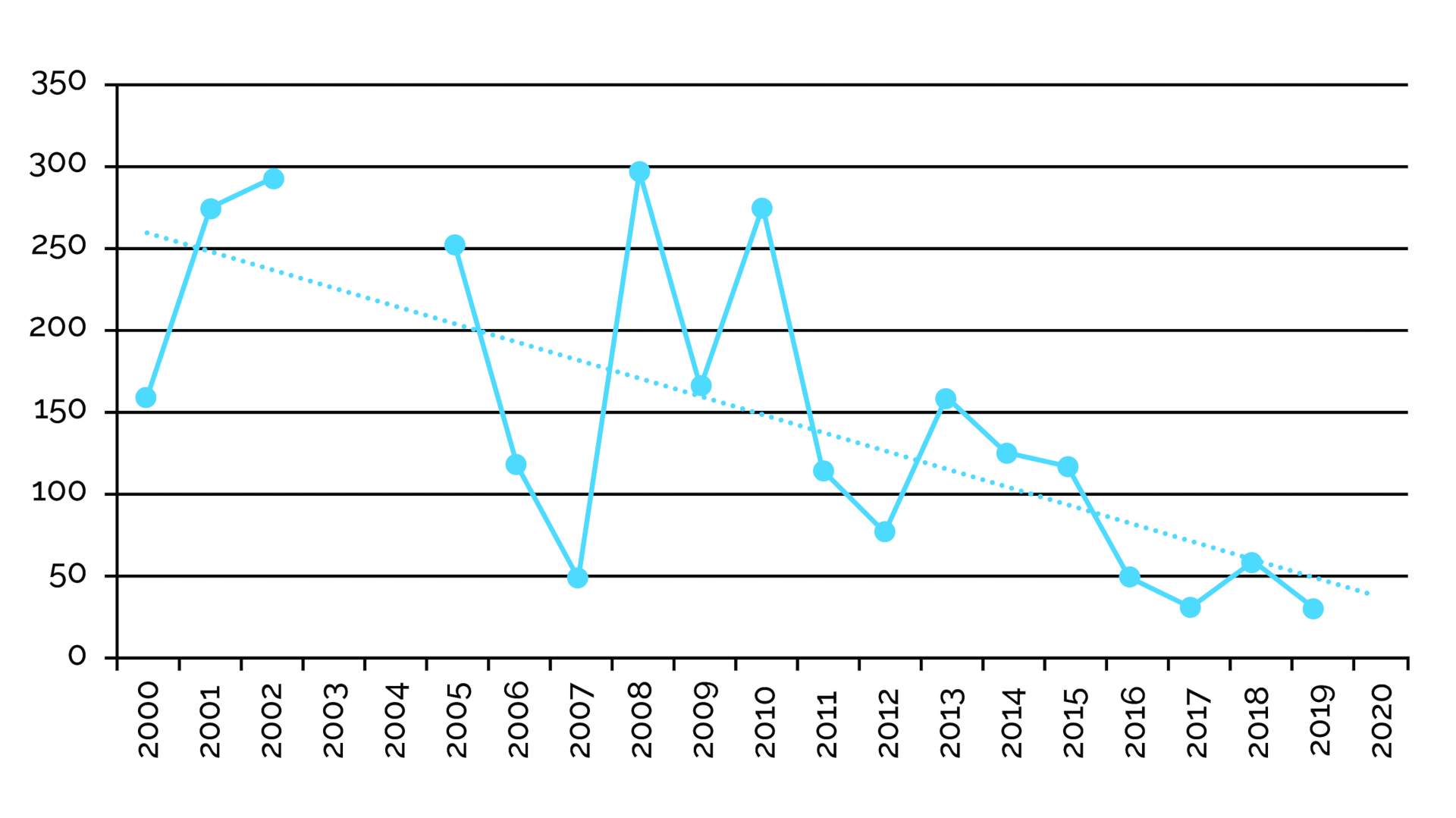
Figure 1: Endako Chinook Spawner Escapement
Salmon has always been an iconic resource in British Columbia. First Nations in this province have relied on salmon for food, social, and ceremonial purposes since time immemorial. Many British Columbians love the challenge of reeling in one of these beautiful fish. But salmon populations are in sharp decline across the province, and it’s up to us to do something to help them.
Climate change, as well as reduced forest cover, have led to seasonal reductions in water levels and an increase in water temperature in streams and rivers in BC. This makes for challenging conditions for migrating salmon, and poor conditions for eggs that are incubating in these waterways. The effect in the Endako is lower August and September flows during periods that are key for Chinook and kokanee migration and spawning.
The Endako River: Fluctuating Flows
Water flow in the Endako has become erratic through the late summer months, which is during the time period that is crucial to spawning Chinook. Those unpredictable flows most often mean that the fish do not arrive at their spawning beds and are left struggling to swim in a river that has become a trickle of water. The orange line in Figure 2 shows how the flow of the Endako has become unpredictable.
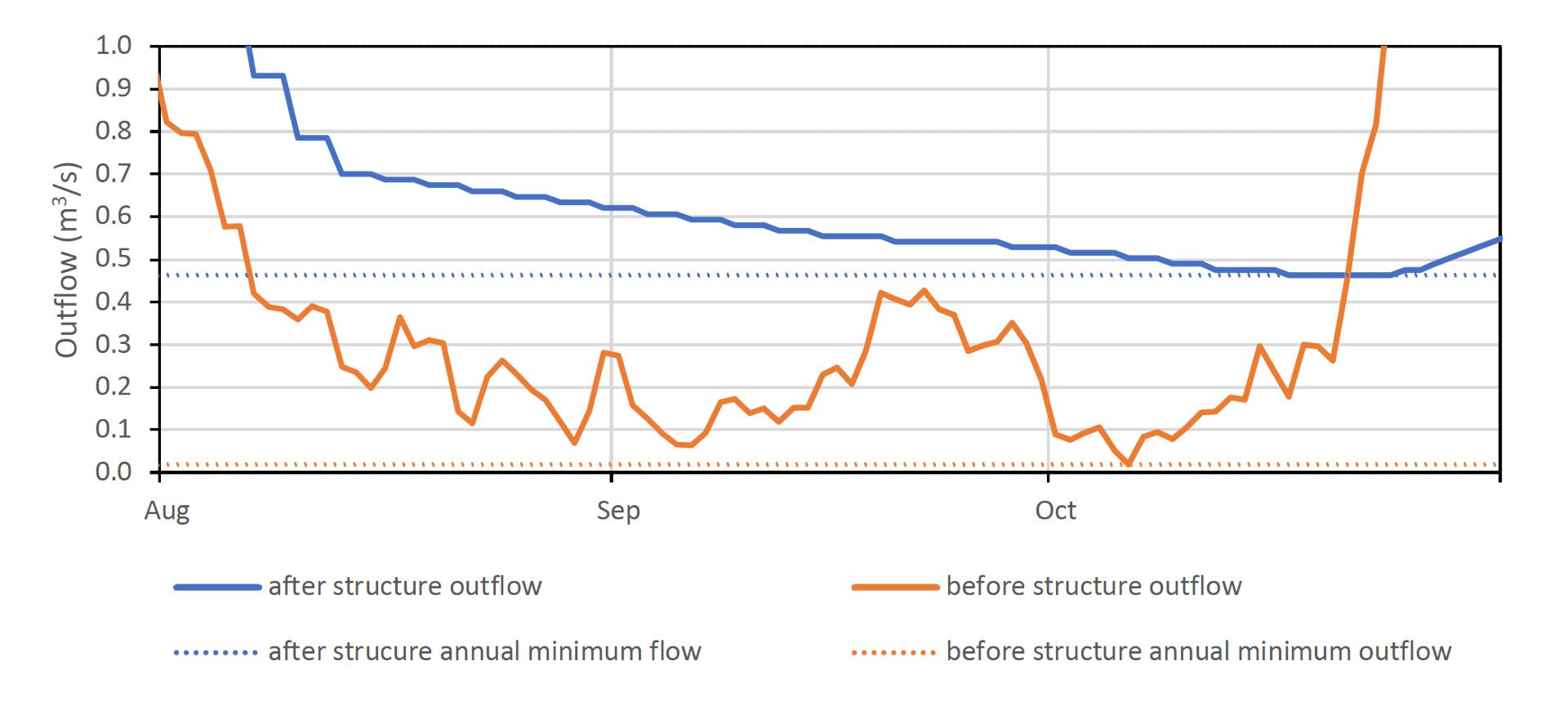
Figure 2: Water Flows in the Endako Before and After the Weir
The Endako Weir:
Stabilizing Waterflow in the Endako
Artist's rendering of the flow of the Endako River before and after weir construction.
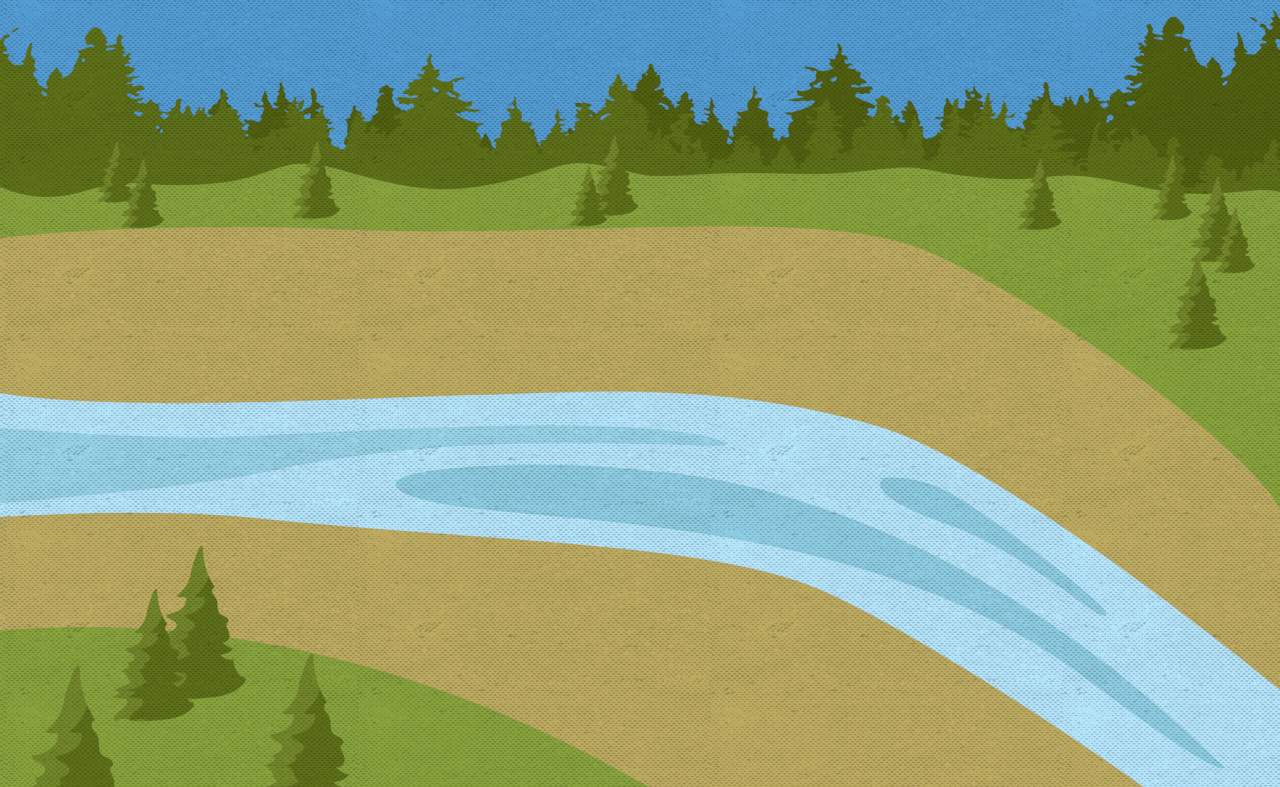
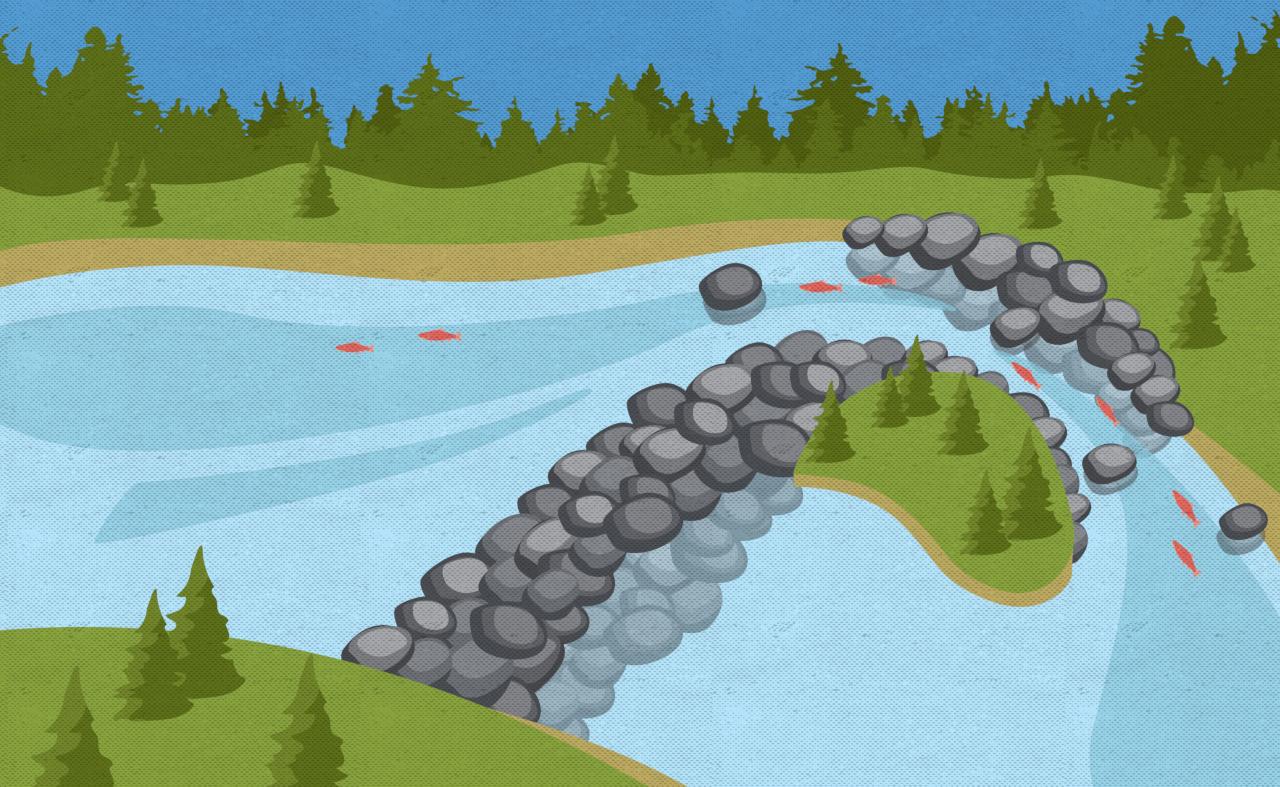
Water Survey Canada and the Upper Fraser Fisheries Conservation Alliance (UFFCA) have been monitoring the Endako for over 20 years. The UFFCA has now come to an elegant solution to the issue of lower water flow: build a weir where Burns Lake flows into the Endako River.
A weir is a structure used to manage the flow of a river. The proposed Endako Weir is very simple in its design: rocks will be placed across the Endako River where it flows from Burns Lake, with a series of notches and pools that aim to reduce the outflow. This will result in slightly more water being stored in Burns Lake during the summer, therefore sustaining higher flows in the Endako during spawning season. These increased flows will improve the spawning and incubation habitat for Endako River Chinook and kokanee and improve habitat for all resident fish that utilize the Endako.
The weir will include a fishway to allow kokanee fry to migrate from spawning areas below the weir back into Burns Lake. The nature-like fishway will also allow rainbow trout and other fish to move freely between the lake and the river.
What Will the Weir do to Water Levels in Burns Lake?
The weir’s construction will not significantly change Burns Lake’s water levels. High water levels will not change at all, and average levels during the year will increase by 33 centimetres, or about 1 foot.
Figure 3 illustrates the effect of the weir on Burns Lake water levels. The red line shows the water level during a sample year before the weir construction. The blue line is a model showing water levels in the lake after the installation of the weir.
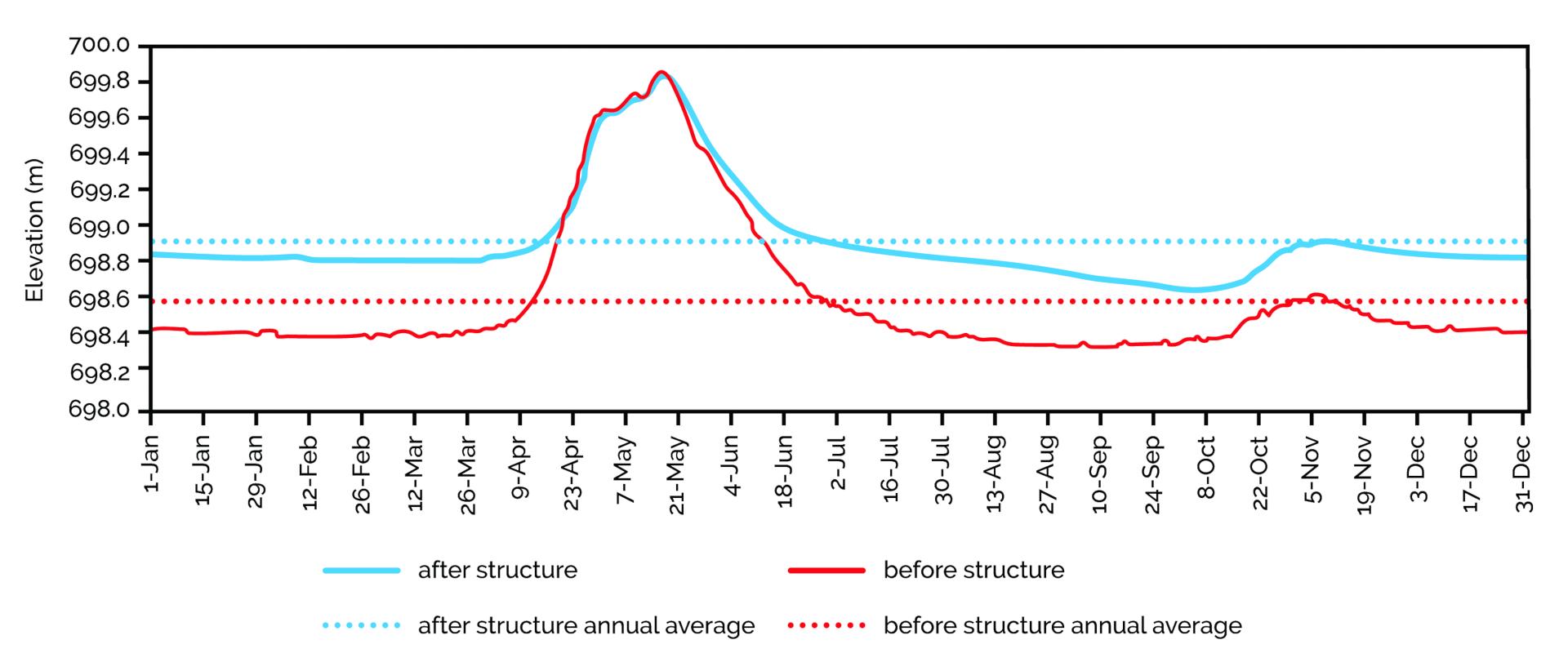
Figure 3: Burns Lake Water Levels
What happens if the weir fails?
According to the hydrological engineering report commissioned as part of the planning of the weir, the weir is very safe. Even if the weir totally fails, the infrastructure and economic losses will be limited to the weir itself, and the weir’s owners. A breach of the weir, even at maximum water levels in Burns Lake, is extremely unlikely to impact environmental or cultural values.
How will we know whether the weir is working?
Measuring the effectiveness of the weir will be the job of UFFCA biologists and technical staff, who have installed water monitoring stations on the Endako River and in Burns Lake. These will be able to tell if the weir is successfully increasing water flows in the Endako where fish spawn.
The UFFCA’s partner the Carrier Sekani Tribal Council also counts spawning Chinook in the Endako system, which will provide another way to understand the effectiveness of the weir. Of course water flows are only one factor in the decline of salmon in BC, but we are hopeful that with the weir installed, as well as the release of Chinook fry reared in enhancement facilities such as the Spruce City Wildlife Association Hatchery in Prince George, that the Endako Chinook will recover and once again be plentiful.
In collaboration with the Carrier Sekani Tribal Council, Ts’il Kaz Koh and municipal, provincial and federal levels of government, the UFFCA will also have teams regularly maintaining the weir to ensure it continues to do its job and complies with provincial safety regulations.